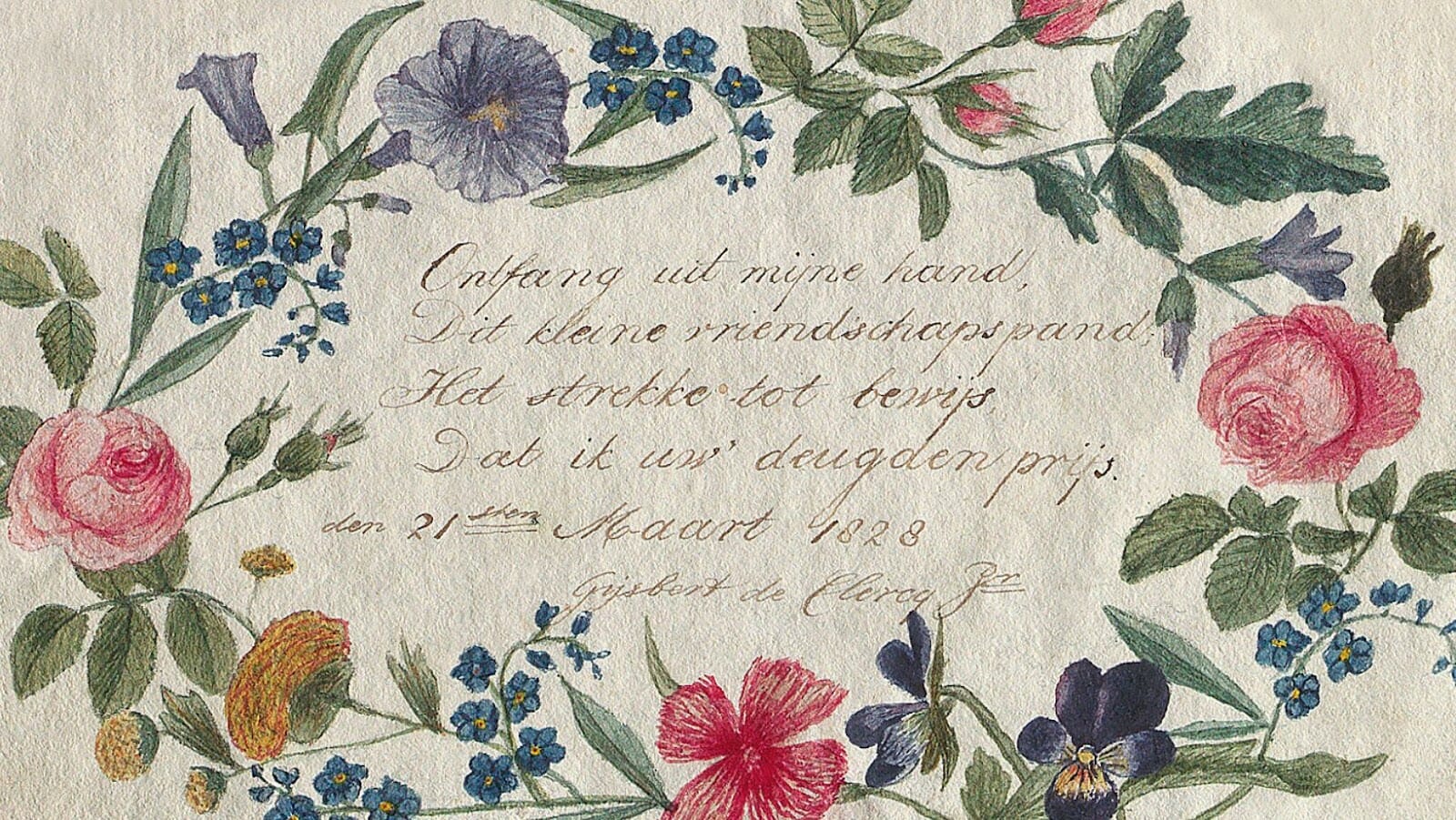Both “Auspex” and “A Psalm of Life” use figurative language to enhance the meaning of the poem by using descriptive language that goes beyond the literal meaning of words.
“Auspex,” for instance, uses metaphor to explore the theme of death, and the speaker’s journey from life to death. For example: “death is the ultimate storm,” and “the ferryman reveals the path to the underworld.” In contrast, “A Psalm of Life” uses personification to explore the theme of life and how one should go about it. For example: “Life is earnest,” and “heart of heart and hand of hand.”
Both poems use figurative language to paint vivid and emotional pictures, capturing the attention of the reader and helping them to engage more deeply with the themes explored in the poem.
How are the Speakers of “Auspex” and “A Psalm of Life” Similar?
In both “Auspex” by Elisabeth Barrett Browning and “A Psalm of Life” by Henry Wadsworth Longfellow, the poets use figurative language to enhance the meaning of the poem. Furthermore, both poems have similar speakers with shared ideas. To explore these similarities, we will look at both poems and the similarities in the speakers’ outlook on life.
The speakers both reflect on the meaning of life
Both speakers in “Auspex” and “A Psalm of Life” contemplate the meaning of life, using different poetic techniques to explore this theme. One similarity between the two poems is the use of figurative language.
In “A Psalm of Life,” the speaker employs metaphors such as “Life is but an empty dream” and “Heart within, and God o’erhead” to convey the idea that life is fleeting and that we can find purpose in our connection to something greater than ourselves. Similarly, “Auspex” uses metaphors such as “Life’s great clock” and “Timekeeper” to suggest that life is a predetermined sequence that we can only observe from a distance.
Through the use of figurative language, both poems provide a vivid depiction of the human condition and offer insights into how we can find meaning in our lives.

Both speakers use figurative language to express their perspectives
The speakers in “Auspex” and “A Psalm of Life” share a common technique in their poetry, utilising figurative language to enhance the meaning of their words.
In “Auspex,” the speaker uses metaphors to describe the act of bird-watching, comparing it to the art of divination and seeing the future.
In “A Psalm of Life,” the speaker uses several figures of speech, including personification of the heart and the soul, and metaphorical language to describe the journey of life, encouraging the reader to find purpose and meaning in their existence.
By using figurative language, the speakers in both poems create vivid imagery in the minds of the readers, and enhance the emotional depth and impact of their messages.
The speakers encourage the audience to live life to the fullest
Both “Auspex” and “A Psalm of Life” are poems that encourage the audience to live life to the fullest. But one of the similarities that make these poems powerful and inspiring is their use of figurative language. Both poems use literary devices such as metaphors, similes, and personifications to enhance the meaning and emotional impact of the words.
In “Auspex,” the speaker compares life to a “spectacle” and uses vivid descriptions of nature to evoke a sense of wonder and awe. On the other hand, “A Psalm of Life” encourages readers to view life as a journey and use time wisely. The speaker employs metaphors like “footprints on the sands of time” to illustrate the importance of leaving a positive legacy.
By using figurative language, both poems are able to convey profound life lessons in a way that is both memorable and emotionally compelling.
Pro Tip: When using figurative language in your own writing, be sure to choose metaphors or similes that are relevant to your message and add depth to your words.
Figurative Language in “Auspex”
In the poem “Auspex” by W.H. Auden, the speaker uses powerful imagery and figurative language to illustrate the idea that the world is constantly changing around us. Throughout the poem, the speaker employs similes, metaphors, personification, and allusions to enhance the poem’s message and express his feelings about his changing surroundings.
Additionally, the speaker’s thoughts suggest that he is questioning his own mortality and emphasising the need for people to make the most of the moments they are given.
Use of metaphors to convey themes of fear and uncertainty
Metaphors are a powerful tool for writers to convey themes of fear and uncertainty. In “Auspex,” the use of figurative language enhances the meaning of the poem by creating vivid and powerful imagery that evokes emotions of dread and ambiguity.
For example, the lines “I am a bird that cannot find its wings / A ship that cannot find its way” use metaphors to describe the speaker’s feelings of being lost and directionless. By comparing oneself to a bird without wings and a ship without a compass, the speaker emphasises the depth of their fear and uncertainty.
Similarly, in “A Psalm of Life,” figurative language is used to convey themes of hope and perseverance. The line “Lives of great men all remind us / We can make our lives sublime” compares the lives of great men to beacons of hope for the rest of us. Through the use of metaphor, the poet emphasises the idea that we can all achieve greatness if we follow in the footsteps of those who came before us.
In both “Auspex” and “A Psalm of Life,” figurative language is used to enhance the meaning of the poem by creating vivid images and powerful emotions.
Use of personification to bring abstract concepts to life
Personification is a powerful tool that poets use to bring abstract concepts to life. In “Auspex,” a prime example of figurative language, personification is used to give life to the idea of the future.
| The future is portrayed as a conscious entity that observes and plans, a being with a clear-eyed vision and a sense of purpose. This use of figurative language helps the reader to connect with the abstract concept of the future on a deeper, more emotional level. It makes the future more relatable and understandable, and gives it a sense of urgency and importance that might be lacking otherwise. |
Likewise, in “A Psalm of Life,” figurative language is used to great effect to enhance the meaning and impact of the poem. The metaphor of life as a “battlefield” inspires the reader to view life as a struggle that must be fought with courage and determination. This comparison to a battlefield also imbues life with a sense of urgency and importance, highlighting the need to seize every moment and make the most of the time we have.
Use of symbolism to convey the idea of fate
Symbolism is a powerful tool that can be used to convey complex ideas such as fate in literature effectively. The poem “Auspex” is an excellent example of the use of symbolism to convey the idea of fate.
The speaker in the poem uses the symbol of a bird of prey, an augur, to establish the theme of fate. The augur symbolises the inescapable fate the speaker is facing. The speaker sees the bird as a messenger from the divine, telling him that his fate is predetermined and inescapable. The use of symbolism here elevates the poem’s meaning by conveying a sense of inevitability, highlighting the speaker’s lack of control over their destiny.
Similarly, in the poem “A Psalm of Life,” figurative language plays a crucial role in conveying the meaning of the poem. The metaphor “Life is but an empty dream” highlights the fleeting nature of life and emphasises the need to make the most of it. The use of figurative language in this poem makes the message more memorable and impactful for the reader.
Therefore, the use of symbolism and figurative language is an effective technique to convey complex ideas in literature and enhance the meaning of a poem for the reader.

Figurative Language in “A Psalm of Life”
The poem, “A Psalm of Life” by Henry Wadsworth Longfellow, uses figurative language to convey its message. Figurative language such as personification and metaphor are both used, allowing the speaker to explain his attitude and desires without being too direct. The same is true of “Auspex” by Andrew Bernstein, which also employs figurative language to enhance its message. Both poems use figurative language similarly to achieve a similar purpose.
Use of metaphors to convey themes of purpose and perseverance
Metaphors are a powerful tool in poetry that can help convey complex themes of purpose and perseverance through vivid imagery and wordplay.
In “A Psalm of Life,” Henry Wadsworth Longfellow uses metaphors to emphasise the importance of taking action and living a purposeful life. He compares life to a “battlefield” where one must strive to make their mark, and to a “forest” where each person must choose their own path and make their way through the obstacles.
Similarly, in “Auspex,” Emily Dickinson uses the metaphor of a bird of prey to convey the idea of perseverance in the face of adversity. Just as the bird continues to soar above its obstacles, we too must push through our struggles and hardships to reach our goals.
By using metaphors to enhance the meaning of their poetry, Longfellow and Dickinson invite their readers to view life through a new, more imaginative lens, encouraging them to find purpose and persevere through whatever challenges may come their way.
Use of personification to bring abstract concepts to life
Personification is a powerful literary tool that breathes life into abstract concepts by attributing human characteristics to them. “A Psalm of Life” by Henry Wadsworth Longfellow is an excellent example of the effective use of personification to present a deeper meaning in the poem.
In the poem, Longfellow personifies life as a mysterious traveller, and describes it as an “earnest, thoughtful creature” that “acts a noble part” and “leads us onward.” This personification gives life to the concept of life itself and makes it a relatable and tangible character in the poem.
“Auspex” by Nisha Sharma is another poem that uses personification to enrich the meaning of the poem. In this poem, the poet personifies hope as a bird that “sings a song” and gives strength and courage to others. The use of personification makes the abstract concept of hope more accessible and relatable to readers.
Overall, the use of personification in literature is a powerful way to make abstract concepts tangible and relatable, which adds depth and emotion to our writing.

Use of parallelism to emphasise the importance of taking action in life
Parallelism is a literary device that emphasises the importance of taking action in life by creating a pattern of repetition that drives home the message.
In “A Psalm of Life” by Henry Longfellow, the use of parallelism in the line “Life is real! Life is earnest!” emphasises the seriousness of living and the importance of making the most of our time on earth. Similarly, in “Auspex” by Robert Browning, the line “We are made so that we love first when we see them painted, things we have passed perhaps a hundred times” uses parallelism to highlight how often we take things for granted until they are presented to us in a new light.
By using parallelism, poets can draw attention to their message and encourage readers to take action in their own lives.


